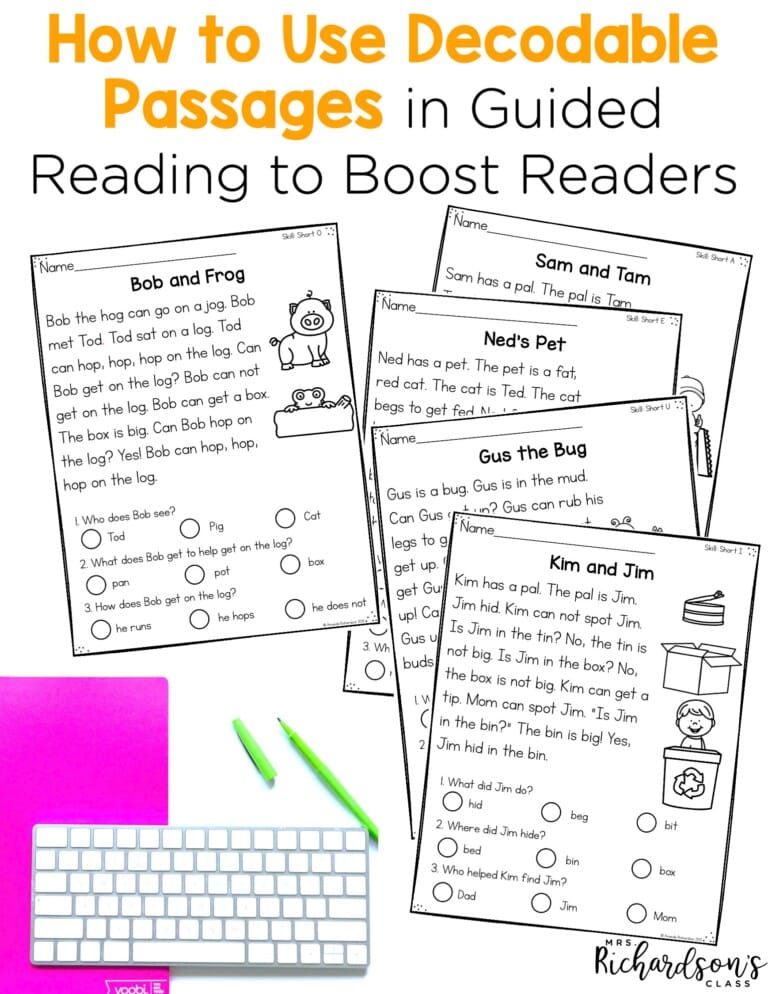

Creating and maintaining organized literacy centers can be the key to a smooth and productive classroom. For kindergarten and 1st grade teachers, having a system that helps students find what they need, stay focused, and follow clear directions is crucial. Let’s explore three simple tips for organizing literacy centers and keeping them manageable!

*Amazon affiliate links are used below at no cost to you. This is a simple way to support the blog.
The first step to organizing literacy centers is efficient storage. Having designated storage areas not only helps you find what you need quickly, but it also helps students learn where materials belong. When everything has a home, cleanup is faster, and there’s less confusion about where items should go.
Some favorite storage tools include:
By organizing your materials into clearly labeled containers, students can take responsibility for keeping the centers tidy, and you can quickly grab what you need for each center.
Simplicity is key when it comes to setting up your literacy centers. Avoid overwhelming students with too many choices at once. Whether you’re setting up a station for phonics practice, writing, or reading comprehension, keep it focused on the essential materials.
Here are a few set-up tips:


Get Reading Center Tub Labels HERE!
By limiting the number of materials and providing designated, quiet areas, you’ll create a streamlined system that keeps students engaged and focused.
One of the most important aspects of organizing literacy centers is making sure students know exactly what to do and where to go. Without clear guidance, your centers can quickly become chaotic.
Here are some strategies to keep things running smoothly:

Get Science of Reading Centers with Visual Directions HERE!

Get Reading Center Rotation Slides HERE!

With clear, consistent directions, students will be able to navigate their centers with confidence and independence.
To recap, here are some tools that help keep literacy centers organized:
I love to shop at Dollar Tree and Goodwill for tools like this, too!
Organizing literacy centers doesn’t have to be complicated! By making storage easy, simplifying your set-up, and giving clear directions, you can ensure that your centers run smoothly. When students know where to go, what to do, and how to clean up, they’ll be more engaged in their learning, and you’ll spend less time managing the chaos.

pin it
Keep these strategies in mind for organizing literacy centers, and watch how your classroom literacy time becomes more efficient and meaningful with literacy practice!

Want to use the latest research to boost your readers during small groups? This FREE guide is packed with engaging ideas to help them grow!

I’m a K-1 teacher who is passionate about making lessons your students love and that are easy to implement for teachers. Helping teachers like you navigate their way through their literacy block brings me great joy. I am a lifelong learner who loves staying on top of current literacy learning and practices. Here, you’ll find the tools you need to move your K-2 students forward!


| Cookie | Duration | Description |
|---|---|---|
| cookielawinfo-checkbox-analytics | 11 months | This cookie is set by GDPR Cookie Consent plugin. The cookie is used to store the user consent for the cookies in the category "Analytics". |
| cookielawinfo-checkbox-functional | 11 months | The cookie is set by GDPR cookie consent to record the user consent for the cookies in the category "Functional". |
| cookielawinfo-checkbox-necessary | 11 months | This cookie is set by GDPR Cookie Consent plugin. The cookies is used to store the user consent for the cookies in the category "Necessary". |
| cookielawinfo-checkbox-others | 11 months | This cookie is set by GDPR Cookie Consent plugin. The cookie is used to store the user consent for the cookies in the category "Other. |
| cookielawinfo-checkbox-performance | 11 months | This cookie is set by GDPR Cookie Consent plugin. The cookie is used to store the user consent for the cookies in the category "Performance". |
| viewed_cookie_policy | 11 months | The cookie is set by the GDPR Cookie Consent plugin and is used to store whether or not user has consented to the use of cookies. It does not store any personal data. |



One Response
Wonderful tips !